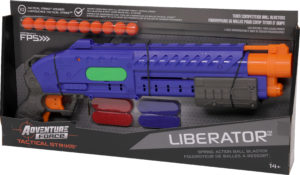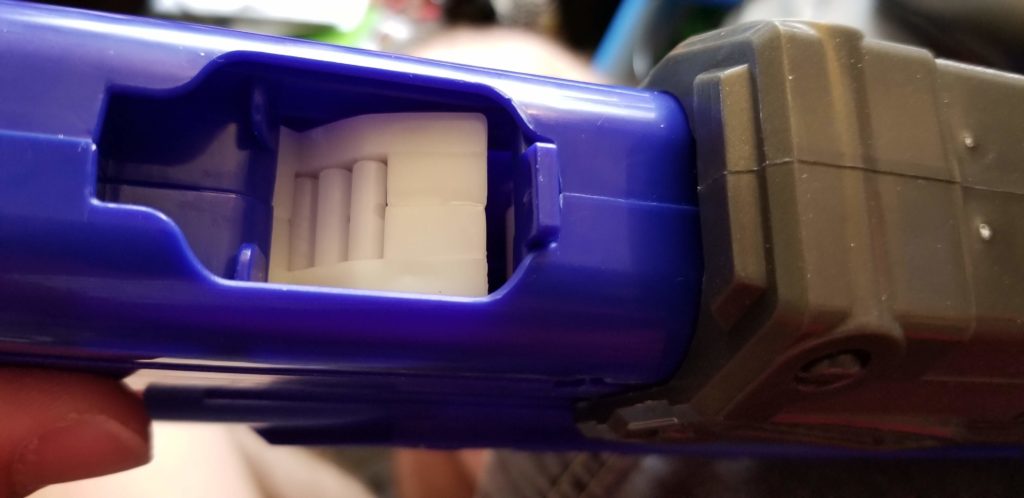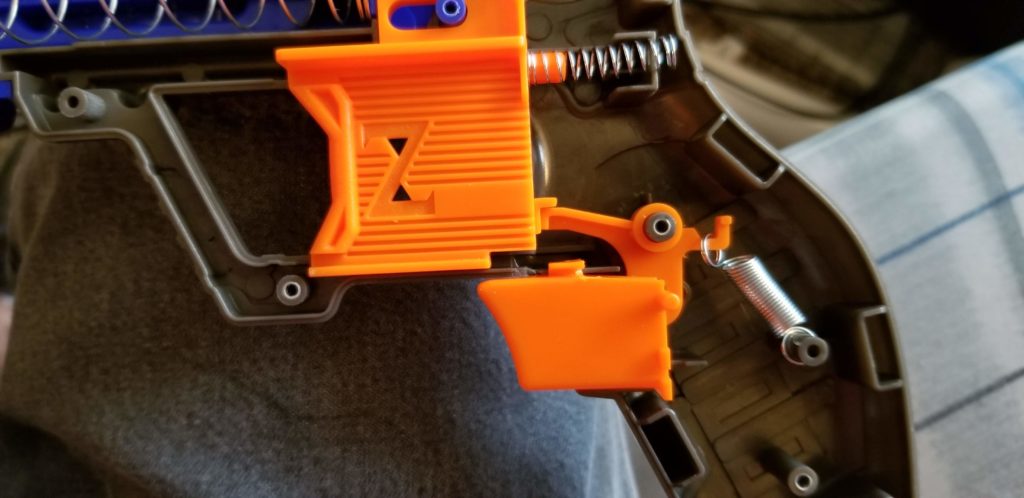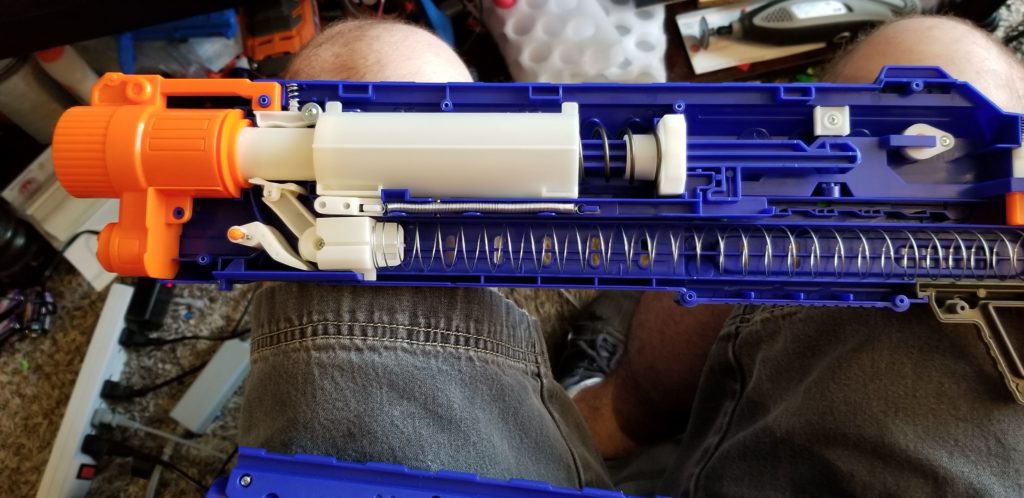

Adventure Force Tactical Strike Liberator
Prime Time Toys
$18 (Walmart online exclusive in the US)
78fps
Two balls per second
A solid, if imperfect, ball blaster with room for improvement.
Adventure Force Liberator Review
August 17, 2019The Liberator first piqued my interest when it appeared at the Dart Zone booth at Foamcon this summer. A shotgun platform, with an internal magazine? That’s a solid setup for Rival-type blasters. The end result isn’t quite what I was hoping for, but it still performs decently well. And it has a bit of room for older users to make it better.
Compact Blasting
 The Liberator fills a similar role to the Titanium/Dart Zone Powerball. It’s relatively compact, primes via a front pump handle, and holds a decent number of rounds. Instead of a hopper, however, the Liberator opts for a ten round internal magazine. The balls are loaded at the front, and the magazine sits under the plunger tube and firing assembly.
The Liberator fills a similar role to the Titanium/Dart Zone Powerball. It’s relatively compact, primes via a front pump handle, and holds a decent number of rounds. Instead of a hopper, however, the Liberator opts for a ten round internal magazine. The balls are loaded at the front, and the magazine sits under the plunger tube and firing assembly.
 Loading the magazine from empty is easy. Pull back the priming handle, then slide open the door underneath. Within the exposed hole is a white flap that isolates the magazine from the barrel loading space. After loading the magazine, close the door and finish the priming motion.
Loading the magazine from empty is easy. Pull back the priming handle, then slide open the door underneath. Within the exposed hole is a white flap that isolates the magazine from the barrel loading space. After loading the magazine, close the door and finish the priming motion.
Sadly, this process does not allow easy reloading when the blaster isn’t empty; balls sitting inside the blaster get in the way, and trying to squeeze ammo into the mag can result in accidentally double-freding the blaster.
Also on the Blaster…
 The Liberator also features a unique safety mechanism. Most Rival-type blasters have a toggle switch that prevents trigger depression. The Liberator has a secondary trigger that must be held down before pulling the main trigger. In my case, I ended up removing it; that will come down to the user’s personal preference.
The Liberator also features a unique safety mechanism. Most Rival-type blasters have a toggle switch that prevents trigger depression. The Liberator has a secondary trigger that must be held down before pulling the main trigger. In my case, I ended up removing it; that will come down to the user’s personal preference.
The blaster features a top rail, though there aren’t any accessories for it. The blaster also has sights – the front sight blends in with the orange barrel, but can flip up to different positions.
Performance
Stock performance is lower than expected, with my blaster averaging 78fps. Rate of fire was at two balls per second, normal for a Rival spring blaster.
Modification and Use
 The Liberator can easily be improved with a new spring – in my case, 13 coils of a McMaster K25 spring offered a heavier prime, but also 116fps average velocities.
The Liberator can easily be improved with a new spring – in my case, 13 coils of a McMaster K25 spring offered a heavier prime, but also 116fps average velocities.
It’s at this stage that the Liberator starts to shine – I used the blaster in this format at a recent indoor war, and it had the ranges to compete with most other blasters on the field (with extensive cover, and good aim). The reloading issue wasn’t as much of a hindrance in practice; it was simple to just wait to reload, then depending on time constraints with the enemy team, fill partially and keep going.
Last Thoughts
The Liberator had me excited, so perhaps the end result is more of a letdown due to expectations than blaster quality. Even so, it’s a solid (if underperforming) ball blaster than can be easily improved and can hold its own.

